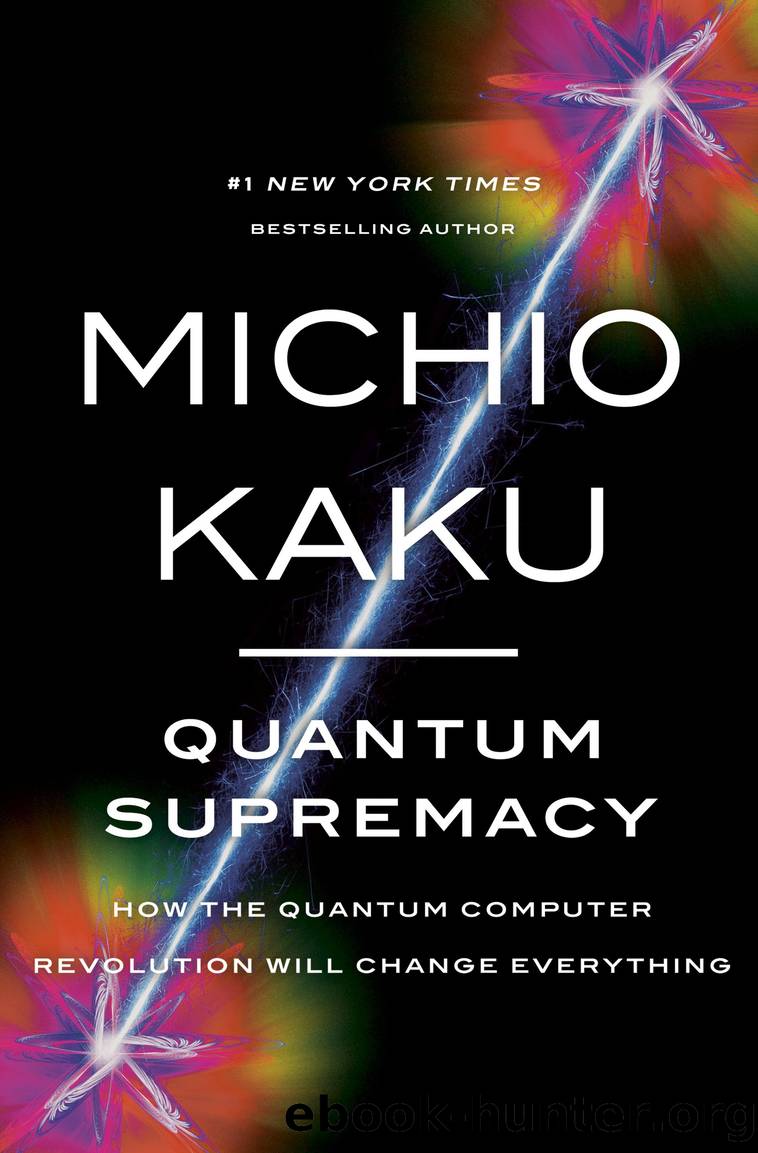Quantum Supremacy by Michio Kaku;

Author:Michio Kaku; [Kaku, Michio]
Language: eng
Format: epub
Publisher: Penguin Random House LLC
Published: 2023-05-02T00:00:00+00:00
Learning Machines
One scientist who has thought long and hard about the future of AI is Rodney Brooks, former director of MITâs Artificial Intelligence Laboratory, which was founded by Marvin Minsky.
Brooks believes AI may have been conceived too narrowly. For example, he told me, consider a fly. It can perform miraculous feats of navigation that outperform our finest machines. All by itself, it can deftly fly around a room, maneuver, avoid obstacles, locate food, find mates, and hide, all with a brain no bigger than a pinpoint. It is truly a marvel of biological engineering.
How can that be? How can Mother Nature create a flying machine that would put our finest aircraft to shame?
He began to realize that maybe the field of AI was asking the wrong questions back in 1956. Back then, it was assumed that the brain was a Turing machine of some sort, a digital computer. You write down the complete rules for chess, walking, algebra, etc. into one gigantic piece of software, and then you insert it into the digital computer, and suddenly it begins to think. âThinkingâ was reduced to software and hence the basic strategy was clear: write increasingly sophisticated software to guide the machine.
A Turing machine, we recall, has a processor that carries out the commands fed into it. It is only as intelligent as the programming it implements. So a walking robot has to have all of Newtonâs laws of motion programmed into it in order to guide the motion of its limbs, microsecond by microsecond. This requires gigantic computer programs, with millions of lines of computer code, to simply walk across the room.
AI machines up to then, Brooks told me, were based on programming all the laws of logic and motion from the very start, which turned out to be an arduous task. This was called the top-down approach, when robots were programmed to master everything from the very beginning. But the robots designed this way were pathetic. If you take Shakey or an advanced military robot of the period and put it in the forest, what does it do? Most likely, it gets lost or falls over. Yet the smallest insect with its minuscule brain can whiz around the area, find food, mates, and shelter while our robot flails helplessly on its back.
This is not how Mother Nature has designed her creatures.
In nature, Brooks realized, animals are not programmed to walk from the start. They learn the hard way, by putting one leg in front of the other, falling down, and doing it again. Trial and error is the way of nature.
This goes back to the advice every music teacher gives to their promising student. How do you get to Carnegie Hall? Answer: practice, practice, practice.
In other words, Mother Nature designs creatures that are pattern-seeking learning machines, using trial and error to navigate the world. They make mistakes, but with each iteration, they come closer to success.
This is a bottom-up approach, and it starts with nothing but bumping into things. For example, babies learn by mimicking adults.
Download
This site does not store any files on its server. We only index and link to content provided by other sites. Please contact the content providers to delete copyright contents if any and email us, we'll remove relevant links or contents immediately.
The Complete Stick Figure Physics Tutorials by Allen Sarah(7116)
Secrets of Antigravity Propulsion: Tesla, UFOs, and Classified Aerospace Technology by Ph.D. Paul A. Laviolette(4902)
Thing Explainer by Randall Munroe(3771)
The River of Consciousness by Oliver Sacks(3397)
The Order of Time by Carlo Rovelli(3065)
How To by Randall Munroe(2905)
I Live in the Future & Here's How It Works by Nick Bilton(2827)
A Brief History of Time by Stephen Hawking(2807)
What If?: Serious Scientific Answers to Absurd Hypothetical Questions by Randall Munroe(2538)
The Great Unknown by Marcus du Sautoy(2525)
Midnight in Chernobyl by Adam Higginbotham(2374)
Blockchain: Ultimate Step By Step Guide To Understanding Blockchain Technology, Bitcoin Creation, and the future of Money (Novice to Expert) by Keizer Söze(2372)
Networks: An Introduction by Newman Mark(2254)
The Meaning of it All by Richard Feynman(2205)
Easy Electronics by Charles Platt(2196)
The Tao of Physics by Fritjof Capra(2157)
Midnight in Chernobyl: The Untold Story of the World's Greatest Nuclear Disaster by Adam Higginbotham(2064)
When by Daniel H Pink(2015)
Introducing Relativity by Bruce Bassett(2009)
